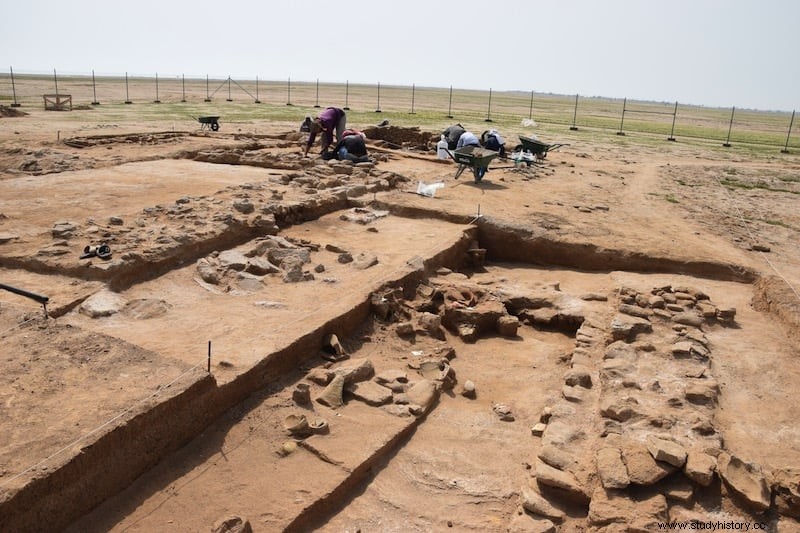A few years ago we talked here about the discovery, on the Kuwaiti island of Failaka, of the remains of a Greek city from the 4th century BC. built in the time of Alexander the Great. The city was inhabited by the Greeks until 150 BC. and it is believed that it was an advanced surveillance post, especially since that is what the name Failaka (fylakio would mean). in Greek).
They are not the only archaeological remains that exist on the island, as there are also samples of much earlier Mesopotamian buildings, from about 2000 BC. when a drop in sea level allowed settlements.
We would have to wait until 324 B.C. for the Greeks to arrive, who founded a city with the name of Ikaros , in reference to the mythical hero son of Daedalus. A huge Hellenistic fort and two temples have been preserved from it.

More recent is the discovery made in 2016 by the Slovak archaeological mission. At the Al-Qusur site the excavations of a Christian villa between the 7th and 8th centuries AD. the remains of a tower containing a complex system of canals appeared inside.
After analyzing them, the archaeologists think that it is a wind catchment tower, which used an ingenious conditioning system based on airflow through openings in the structure.

Evaporative cooling systems are quite common in traditional Persian architecture, and there are even examples portrayed in Egyptian tomb paintings dating to around 1300 BC.
The method works by converting water into vapor using heat, a heat that is carried with it as it evaporates, much like sweat does with the body. The Failaka tower would serve to increase that cooling capacity making the air pass over the water channels below the ground, causing a greater drop in temperature inside.
In that sense, it would be the oldest system of its type found so far . Those who built it would have been the Christian Nestorian community that settled on the island from the 5th century AD. until they abandoned it in the 9th century. From that time there are also two churches and several small farms.
